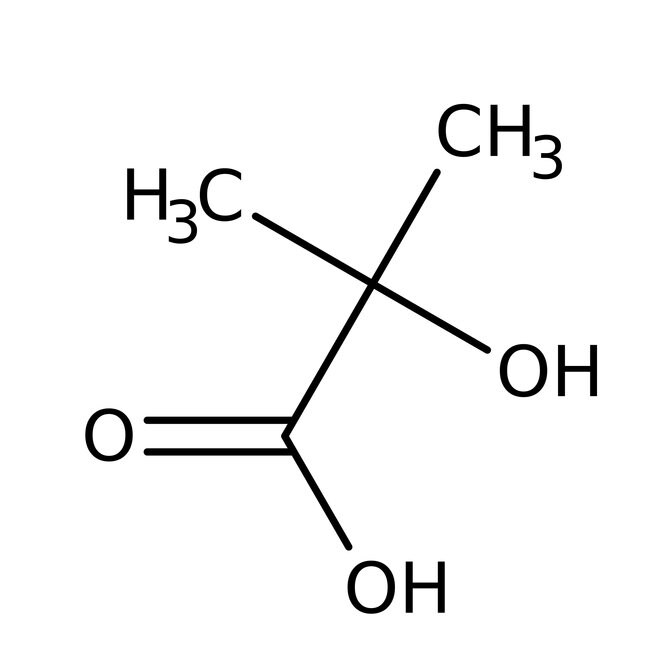Search Thermo Fisher Scientific
Ácido 2-hidroxiisobutírico, 99 % (peso seco), <2 % de agua, Thermo Scientific Chemicals



Ácido 2-hidroxiisobutírico, 99 % (peso seco), <2 % de agua, Thermo Scientific Chemicals
Identificadores químicos
Especificaciones
Descripción
This Thermo Scientific Chemicals brand product was originally part of the Alfa Aesar product portfolio. Some documentation and label information may refer to the legacy brand. The original Alfa Aesar product / item code or SKU reference has not changed as a part of the brand transition to Thermo Scientific Chemicals.
El ácido 2-hidroxiisobutírico se utiliza como electrolito en la separación de los iones metálicos por voltametría cíclica en línea. También se utiliza como compuesto básico para la síntesis de polímeros. Su base conjugada, el 2-hidroxibutirato, se utiliza para catabolizar la L-treonina y sintetizar glutatión. Además, se utiliza como indicador para la detección temprana de la resistencia a la insulina en personas no diabéticas.
Solubilidad
Soluble en agua, éter, alcohol, metanol y benceno caliente.
Notas
Incompatible con agentes oxidantes, bases y agentes reductores.
Figuras
Documentos y descargas
Certificados
Preguntas frecuentes
Citas y referencias
Seguridad y manipulación
Classification of the substance or mixture
CLP classification - Regulation(EC) No 1272/2008
Label Elements
Signal Word
Danger
Hazard Statements
H315 - Causes skin irritation
H318 - Causes serious eye damage
H335 - May cause respiratory irritation
Precautionary Statements
P261 - Avoid breathing dust/fume/gas/mist/vapors/spray
P280 - Wear eye protection/ face protection
P301 + P330 + P331 - IF SWALLOWED: rinse mouth. Do NOT induce vomiting
P305 + P351 + P338 - IF IN EYES: Rinse cautiously with water for several minutes. Remove contact lenses, if present and easy to do. Continue rinsing
P310 - Immediately call a POISON CENTER or doctor/physician